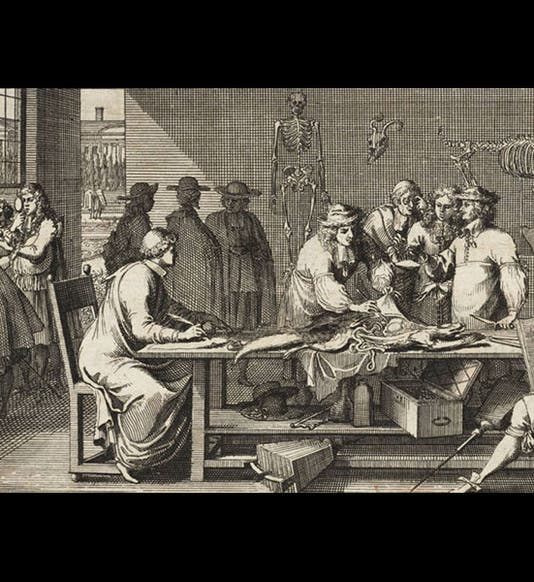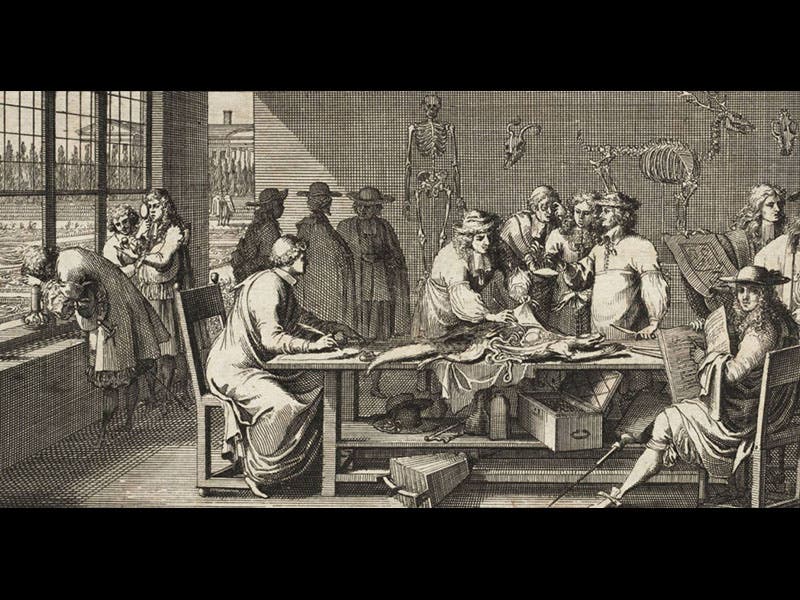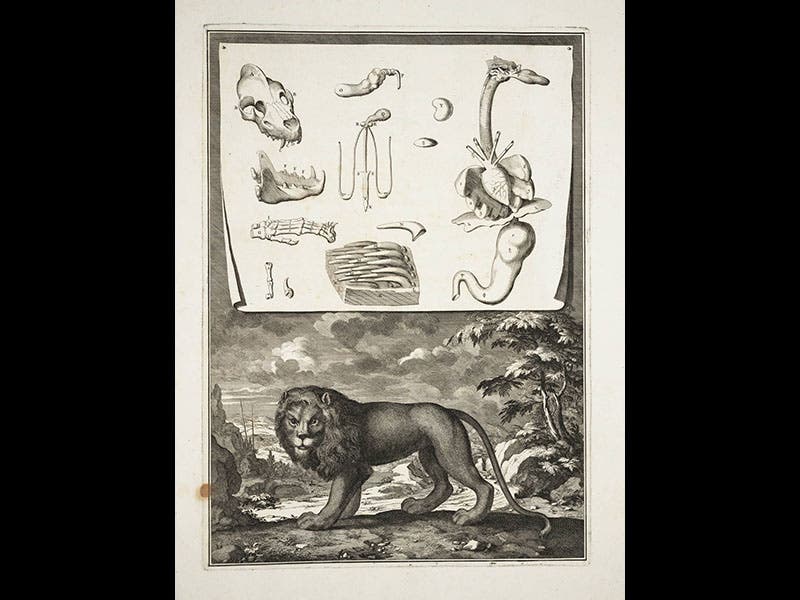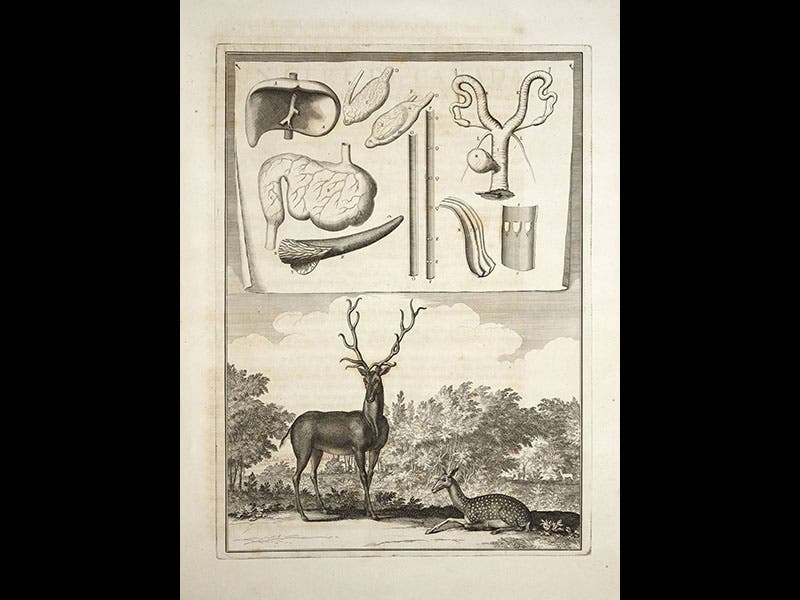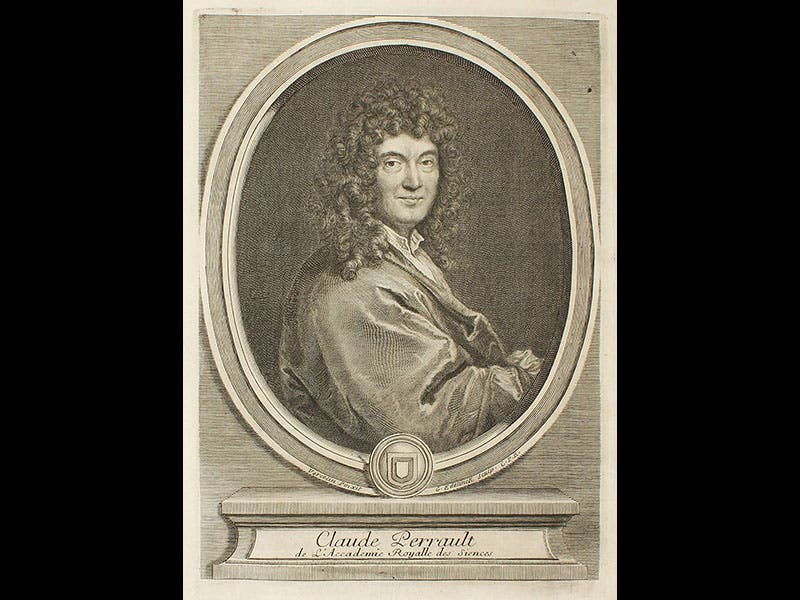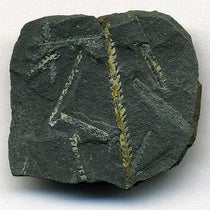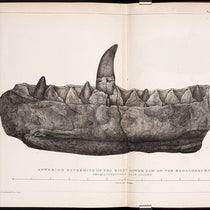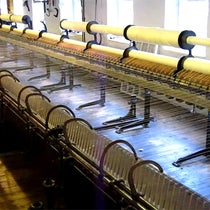Scientist of the Day - Claude Perrault
Claude Perrault, a French physician and anatomist, was born Sep. 25, 1613. In 1666, Perrault became one of the inaugural members of the Academie Royale des Sciences in Paris, where he organized regular dissections of animals that had expired in the King’s menagerie at Versailles. At the time, animal anatomy was not part of natural history; it was rare for a description of an animal in a zoological encyclopedia to include any details of its inner parts. Perrault published the results of the Academy’s group dissections in 1676, and he pointedly called his book: Mémoires pour servir a l’histoire naturelle des animaux—Memoirs for a Natural History of Animals—indicating that comparative anatomy should be an essential part of natural history. After Perrault, it was.
The Memoires, which we acquired in 1996 as the Library’s Millionth Volume, is actually the third stage in the publication history of the Academy’s anatomical studies. A Description anatomique, describing 5 animals, was published anonymously and in small quarto format in 1669 (although the title page of our copy has “Par Claude Perrault” carefully added by a 17th-century pen); a 1671 edition was published in large folio format, so that the plates did not have to be folded, and expanding the number of animals to 13; and the 1676 edition increased the animal count to 29. All of the plates above are from the 1676 edition, and display the outer appearance and inner workings of a lion, a beaver, a coati, and a deer. The first image, depicting the Paris anatomists at work, is a detail of an engraved headpiece that appears at the beginning of the preface. The plates and the headpieces were drawn and engraved by the Academy’s principal artist, Sébastien Le Clerc.
Claude’s brother Charles was very talented himself, writing Tales of Mother Goose, among other things, and inventing the modern fairy tale. In 1696, he published the first volume of a large folio portrait book, Les hommes illustres qui ont paru en France pendant ce siècle, and he thoughtfully included an engraved portrait of brother Claude (sixth image). We have this work in our collection as well.
We displayed Perrault’s Memoires in our 2009 exhibition, The Grandeur of Life, where you can see two more plates from the book, depicting a chameleon and a porcupine with hedgehog.
Dr. William B. Ashworth, Jr., Consultant for the History of Science, Linda Hall Library and Associate Professor, Department of History, University of Missouri-Kansas City. Comments or corrections are welcome; please direct to ashworthw@umkc.edu.

